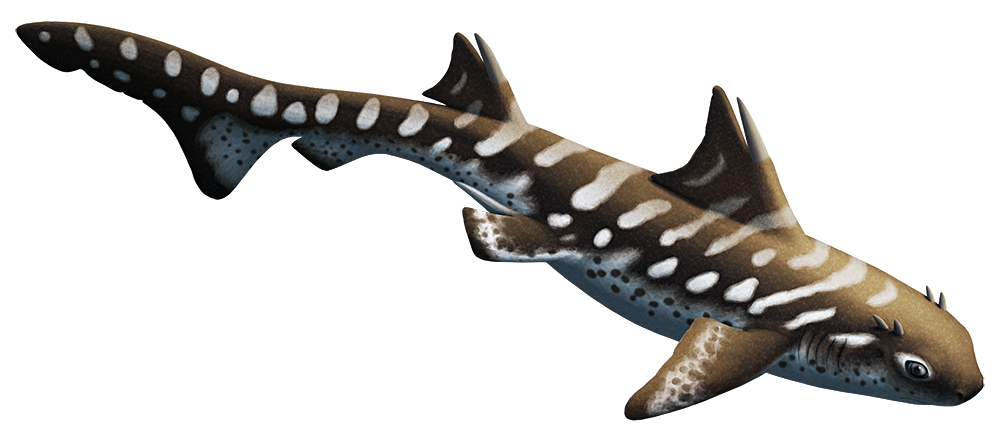All modern species of sharks and rays are part of a single lineage of cartilaginous fish known as neoselachians, and the closest evolutionary “cousins” to all of them were the hybodontiformes.
First appearing way back during the Devonian, about 400 million years ago, these early sharks were widespread around the world and incredibly successful as a group, living in both marine and freshwater environments.
Although due to their cartilaginous skeletons hybodontiformes are mostly known from fossilized teeth, there are still some complete specimens known that show us their overall body shape. They had two dorsal fins, each with a long spine in front, and an asymmetrically-shaped tail. Some of them also had small horn-like spines on their heads – this seems to be a sexually dimorphic trait, since the ones with “horns” also have claspers which show they were males – and they generally had powerful jaws with teeth specialized for crushing.
They were probably fairly slow swimmers most of the time, but would have still been capable of occasional bursts of higher speed, and various species were adapted to a wide range of food sources. Some had wider flatter teeth for cracking open hard-shelled seafloor invertebrates, and others were more opportunistic hunters that would have crunched on pretty much anything they could fit in their mouths.
Hybodontiformes were the dominant type of shark around the world before the end-Permian “Great Dying” mass extinction (~252 mya), and then went on to recover and flourish once again up until the mid-Jurassic.
Hybodus hauffianus was one of the Early Jurassic species, living around 183 million years ago in Europe. About 2m long (6′6″), it had two different types of teeth in its mouth – sharper ones in the front and flatter ones in the back – suggesting it was a generalist predator eating whatever it could catch. We do know its diet at least included the fast-swimming squid-like belemnites, since some fossils preserve clusters of their internal hard skeletons in Hybodus’ stomach region.
Towards the end of the Jurassic neoselachians began to diversify and take over most of the marine shark ecological niches, and the hybodontiformes became increasingly restricted to freshwater. During the Cretaceous they continued to do fairly well in those environments, but most of them still disappeared around the time of the end-Cretaceous extinction (~66 mya). Since most other sharks weren’t actually particularly affected by the extinction event, it’s not clear whether the hybodontiformes were more vulnerable for some reason or whether it was the ongoing competition from neoselachians that drove the majority of them extinct at that time.
Still, a few of them did seem to make it through to the Cenozoic, although they were absent from the fossil record until the Miocene. Freshwater deposits in Sri Lanka have evidence of a late-surviving member of the group living perhaps as recently as 5 million years ago – so they would have only gone completely extinct sometime after that, and we probably missed seeing them alive by only a few million years at most.

